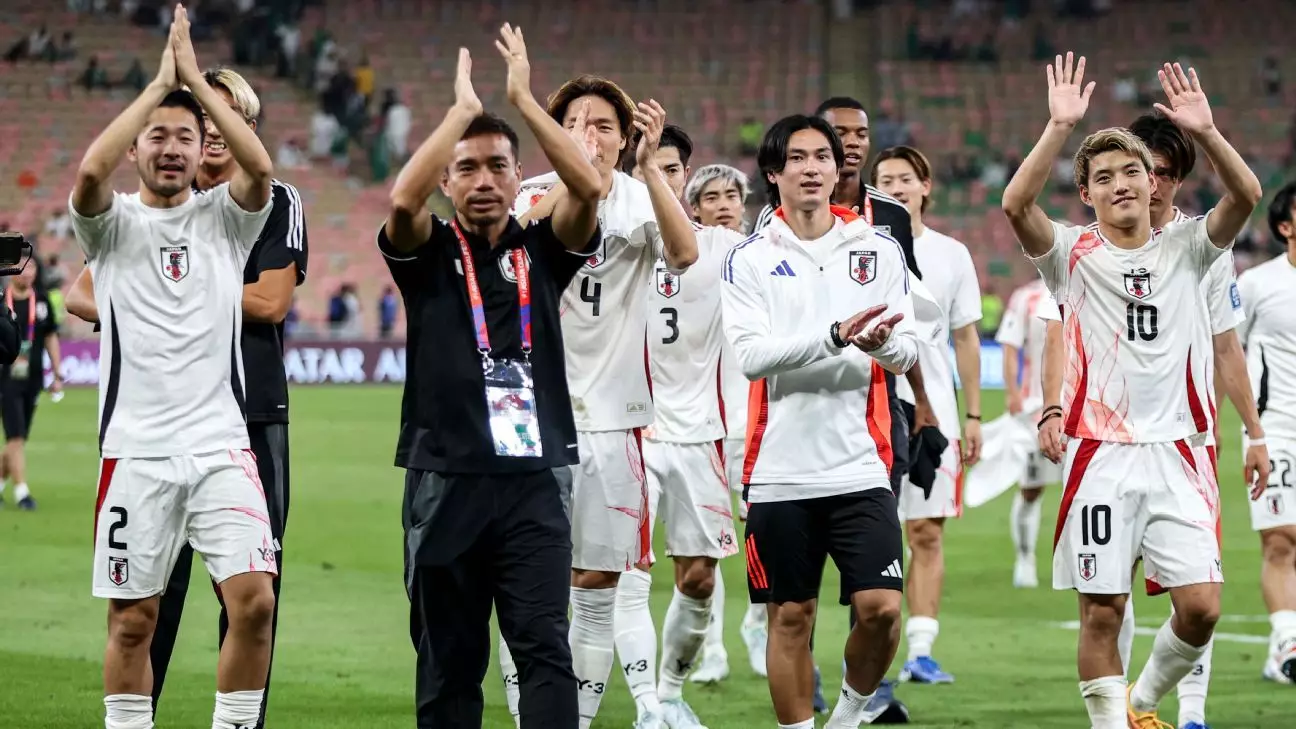In a world where the international football coaching landscape is increasingly unstable, the ability of a coach to remain at the helm through several World Cup cycles is an extraordinary accomplishment. Hajime Moriyasu’s leadership of the Japanese national football team since 2018 is a testament to both his resilience and the growing strength of Japanese football. As of now, only a handful of coaches who led their teams in the 2022 FIFA World Cup in Qatar are still in their positions—most notably Lionel Scaloni and Didier Deschamps. Moriyasu’s steady presence in a climate of frequent turnover reveals the progress Japan has made on the global football stage.
Despite a rocky path, including moments of uncertainty during qualification for the World Cup, Moriyasu has managed to guide the Samurai Blue with a commendable blend of tactical acumen and emotional intelligence. His appointment followed Japan’s performance in the 2018 World Cup, where the team exited in the Round of 16. The change in leadership was necessary, and Moriyasu’s subsequent tenure reflects not only a commitment to consistency but also an evolving vision for football in Japan.
The current form of Japan’s national team is nothing short of remarkable. As they prepare for upcoming qualifiers, they boast an impressive record of having won 20 out of their last 22 matches, indicating a revitalized and competitive squad. The Samurai Blue gained success in the second and third phases of the Asian Football Confederation (AFC) qualifiers, where they showcased their offensive prowess and defensive solidity. Notably, Japan has scored 14 goals in their recent qualifications while maintaining clean sheets—a feat that reflects both individual talent and coherent team strategy.
Victory against formidable opponents has become a hallmark of Moriyasu’s tenure, as evident in Japan’s recent historic win over Saudi Arabia in Jeddah. This triumph, the first of its kind for Japan on Saudi soil, marks a significant milestone in their quest to be recognized as a powerhouse in Asian football. The contributions of players like Daichi Kamada and the younger generation, often referred to as the “Tokyo Olympics Generation,” are integral to this success. These individuals are not only stars in their own right but also embody the evolution and increasing competitiveness of Japanese football.
Despite the positive trajectory, challenges remain on Japan’s path to footballing excellence. While the team’s recent victories are commendable, the costs of previous tournament exits, evidenced by their struggles in the Asian Cup, illustrate that the road to success in international football is neither straightforward nor guaranteed. Japan’s most recent campaign in the Asian Cup raised questions about their ability to maintain form under pressure in crucial fixtures.
As they prepare to face traditional rivals like Australia, Moriyasu’s side must contend with the weight of expectations that accompany their strong qualifying runs. The significance of this match goes beyond just the points at stake; it serves as a litmus test for Moriyasu’s vision for the future of Japanese football. The rivalry with Australia, steeped in mutual respect, adds an additional layer of intensity to the encounter, making it essential for Japan to rise to the occasion.
The Broader Vision: Japan’s Football Philosophy and Future
Initiatives aimed at nurturing football culture within Japan are becoming increasingly important to the nation’s goal of presenting a serious challenge to the prevailing powers in global football. The Japanese Football Association (JFA) has released “Japan’s Way,” a draft for a national football philosophy that aspires to create sustainable growth in the sport. This philosophy emphasizes the development of grassroots structures while promoting enjoyment and inclusivity for all levels of play.
By aiming for a target of “10 million football families” and aspiring to win the FIFA World Cup by 2050, Japan is staking its claim as a footballing nation that is serious about investing in future generations. The J1 League serves as the foundation for this ambition, and the ongoing commitment to improving both its quality and reach will be pivotal in shaping the next generation of talent.
A Bright Future for Japanese Football
With a blend of seasoned professionals and emerging young stars, Japan’s future in football appears bright. The strategic decisions made by Moriyasu and the vision laid out by the JFA are clear indicators of the country’s intentions on the international stage. As Japan embarks on the next chapter in their footballing journey, expectations are high. Should Moriyasu successfully steer his team through the challenges ahead, the world will see that Japan isn’t just a rising force in Asian football, but a potent contender on the global stage, ready to redefine its narrative and garner recognition in the ever-evolving world of football.

Leave a Reply